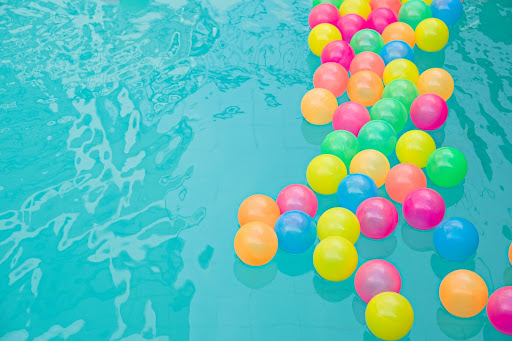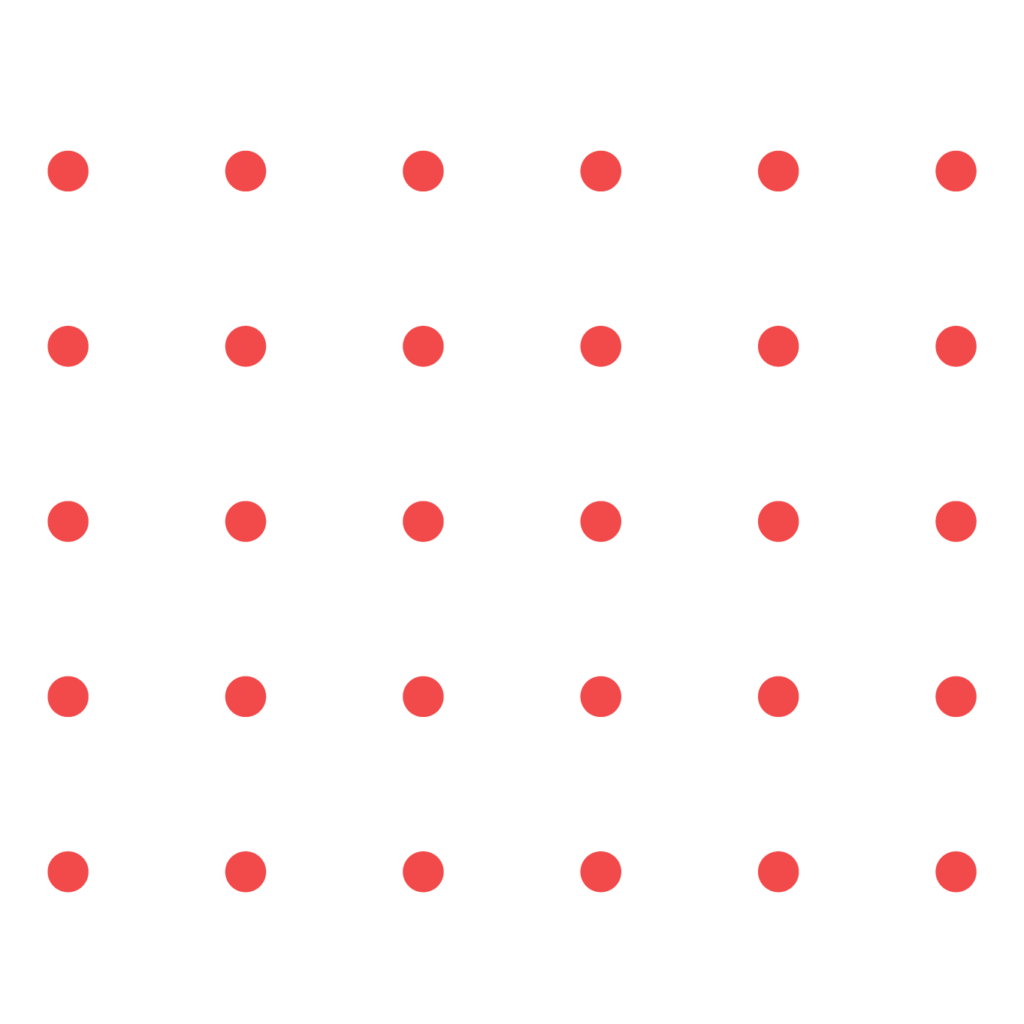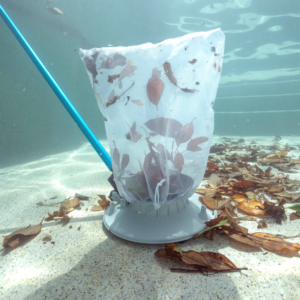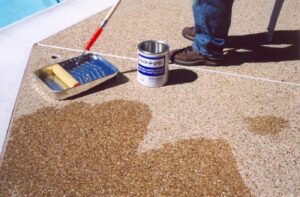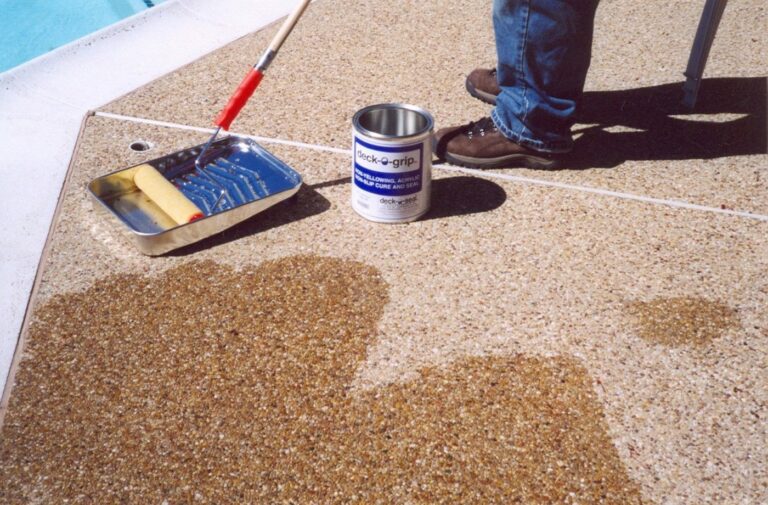During the height of swim season, there are plenty of memories to be made in and around the pool. Pool parties are synonymous with summer, but like any party, there is some cleanup to be done afterwards. Pool water care following a pool party is vital to maintaining a healthy pool. While there may be a range of party remnants scattered around the pool after a bash, it’s what has changed in the water that needs to be addressed quickly.
Pool party guests tend to spend quite a lot of time moving from place to place in the yard. They might spend some time out sunning themselves in lounge chairs on the pool deck while applying suntan lotion, then move to the grass to socialize with other guests, and then move into the pool. The process happens repeatedly over the course of the event. And at pool parties that involve kids, the location changes are often even quicker.
The point is that with each re-entry into the pool, more contaminants are introduced into the water. Sweat, sunscreen, cosmetics, grass, dirt, pollen, urine, and more can make their way into the water. Then, of course, there are the food and drinks that get served at the party and often get spilled in the pool.
Many pool owners take special care to clean and balance their pool water ahead of a party to impress guests, but the added effort needs to be applied again once the party is over. Once a pool party has ended, many pool owners notice that their water has a much cloudier look to it than it had pre-party. That is due to the higher bather load overwhelming the pool chemicals.
While pool sanitizers take care of killing a lot of the germs and bacteria in the water, breaking down and filtering out all of the excess contaminants requires some added pool water care steps.
Step 1 – Test the Water
It can be tempting to add chemicals to a cloudy pool right away to try to address the perceived issue. Reality is that the only way to get a clear picture of what’s going on with the chemical balance is to test the water.
AquaChek offers highly reliable and easy-to-read test strips and digital readers to give pool owners fast and accurate water chemistry results. The AquaChek TruTest System is simple and quick for home owners to use. Once results are read, the appropriate chemicals can be added to restore balance.
Balanced Chemical Ranges
- pH: 7.2 – 7.8
- Alkalinity: 80 – 120
- Calcium Hardness: 200 – 400 ppm
- Cyanuric Acid: 10 – 80
Step 2 – Brush and Vacuum
After testing the water, the walls of the pool and other pool surfaces should be brushed to loosen any build-up. Sometimes when pool owners see a lot of build-up on the pool walls, they want to tackle it with an extra abrasive tool.
However, pool owners need to be sure they have the proper tools for their pool type to avoid damage to the pool surface. A&B Brush, MFG offers a wide range of high-quality brushes to thoroughly clean each type of pool and spa and to safely scrub away build-up in all areas of the pool.
Once algae and excess debris has been loosened from the pool surfaces, it is a good time to vacuum the pool to clear out a lot of the contaminants that are now resting on the bottom of the pool. The Water Tech Volt 550 LI is a cordless robotic pool cleaner that makes the process simple and efficient. This lithium battery powered vacuum filters 7200 gallons of water per hour and pulls everything from larger debris right down to silt from the water.
Step 3 – Shock the Pool
Since pool sanitizer tends to get overwhelmed with a higher than usual bather load, adding shock after a pool party is the logical next step.
Tips for Shocking the Pool
- Some types of pool shock, such as calcium hypochlorite (cal hypo), need to be dissolved before adding to the pool. Be clear on whether or not the shock you are using can be directly added to the water.
- For chlorine shocks, use after the sun goes down so that the unstabilized chlorine isn’t burnt off in the sunlight.
- Different types of shock have different amounts of time that the water must be left before it’s safe to swim in again. The length of time can range from 15 minutes to 8 hours, with most falling in the 8 hour (or longer) range. Be sure to adhere to the guidelines of the product used.
Step 4 – Clean/Backwash the Filter
During a pool party, all of that excess matter that didn’t end up clinging to the walls moved through the pool’s filtration system. That means that the filter could use a cleaning once the party is over.
How to Clean a Cartridge Filter
- Turn off the pump.
- Release the air from the filter.
- Remove the cartridge from the tank.
- Brush off any larger debris particles. Be sure to separate pleats to get a thorough clean.
- Depending on how dirty the cartridge is, either spray it with cartridge filter cleaning spray or soak it in cartridge filter cleaning solution (for a deeper cleaning). Carefully follow the directions for mixing and using the solution.
- Once soaking or spraying is complete, rinse off the filter with water from the garden hose.
- Allow the filter to dry before replacing it. Having a second filter allows for a quicker turnaround time while cleaning the original filter.
How to Backwash a DE or Sand Filter
- Turn off the pump.
- Attach the backwash hose.
- Move the valve to the backwash position.
- Turn the filter system on and allow it to run for 1 to 2 minutes
- Turn the system back off.
- Move the valve to the rinse position.
- Turn the system back on and rinse for 30 seconds to 1 minute.
- Turn the system back off and move the valve back to the filter position.
- At this point, DE filters will typically need additional diatomaceous earth added (the amount will depend on the model and should be indicated in the manual).
Step 5 – Run the Pump and Add Enzymes (As Needed)
To make sure any leftover party contaminants are pulled out of the water, be sure to run the pump. This circulates the water so that any leftover debris that was tracked in during the party is caught by the filter. The pump should be run until all of the water has turned over at least once.
In addition, if the water has a noticeably oily sheen then adding an enzyme product to the water is recommended. The enzymes do their own form of cleaning by eating up the organic matter leftover in the water. Less organic matter also means reduced chlorine demand.
Alpha West has been providing high-quality solutions and education to the pool and spa industry for more than 40 years. For more information about what we do or about the manufacturers and products we represent, reach out to our team of experienced pool manufacturer reps at hello@alphawest.com.

